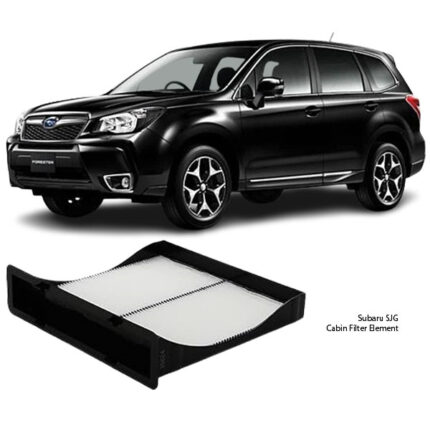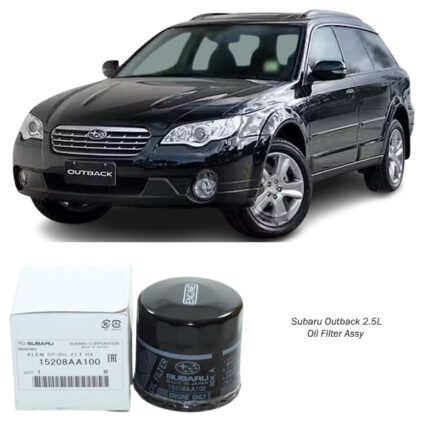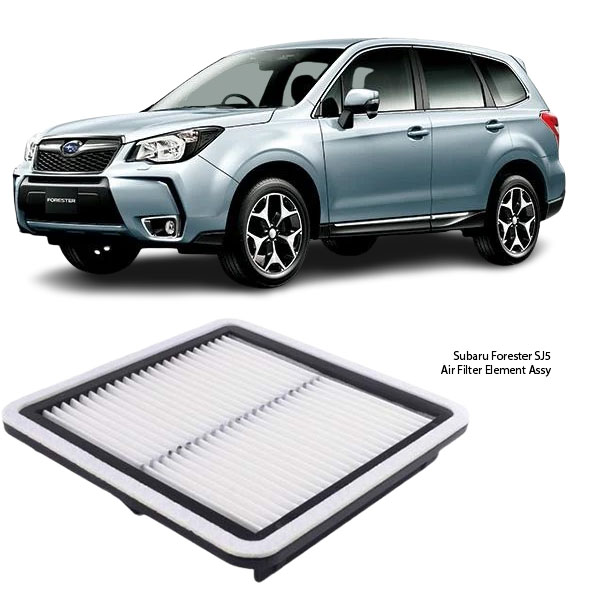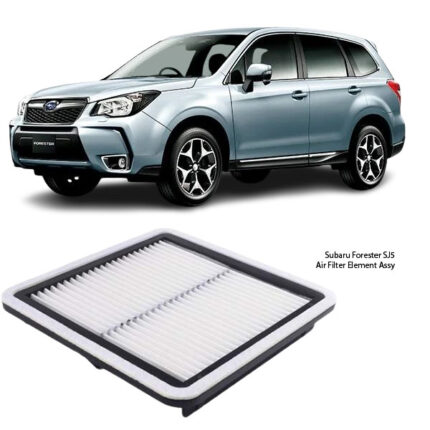Get Subaru Forester SJ5 Air Filter Element Assy 16546-AA090 in Kenya
The Air Filter Element Assembly is a vital component in the engine’s air intake system, designed to filter out harmful airborne contaminants and ensure that only clean air reaches the combustion chamber. While it may appear simple in structure, this component performs a critical role in maintaining optimal engine performance, fuel efficiency, and overall vehicle longevity.
Function and Importance
An internal combustion engine operates by drawing in air, mixing it with fuel, and igniting the mixture to produce power. For this combustion to be efficient and controlled, the air entering the engine must be clean and free of contaminants such as dust, dirt, pollen, sand, and debris.
The Air Filter Element Assembly is engineered to serve as the first line of defense, preventing these particles from entering the engine. Without this filtration, abrasive contaminants could cause significant wear on internal components like pistons, cylinder walls, valves, and the intake manifold, leading to reduced performance, poor fuel economy, and premature engine failure.
Construction and Design
A standard air filter element assembly consists of several key parts:
-
Filter Media: Typically made of pleated paper, synthetic fibers, or a blend of materials, the media captures airborne particles. The pleated design maximizes surface area, allowing more air to flow through while trapping contaminants effectively.
-
Supporting Frame: The filter media is housed within a rigid frame made of plastic, rubber, or metal. This frame ensures the filter maintains its shape under varying pressures and temperatures.
-
Sealing Gasket: A gasket or rubber edge seal ensures the filter fits snugly within the airbox, eliminating any gaps that could allow unfiltered air to bypass the filter.
Depending on the application, some filter assemblies may include pre-filters or foam layers to enhance filtration or extend service intervals.
Airflow and Filtration Efficiency
A balance between filtration and airflow is critical. Restricting airflow reduces engine performance, while insufficient filtration can allow harmful particles to enter the engine. High-quality air filters are designed to:
-
Achieve high filtration efficiency (often 98% or more for particles ≥5 microns)
-
Maintain low air restriction for proper airflow
-
Ensure long service life before needing replacement
Filter manufacturers use advanced testing methods such as ISO 5011 to measure these performance characteristics under real-world conditions.
Benefits of a High-Performance Air Filter Element Assembly
-
Engine Protection
Prevents dust, debris, and other contaminants from causing internal wear and damage. -
Enhanced Fuel Economy
Clean air allows for more efficient combustion, which improves fuel consumption and reduces emissions. -
Optimized Engine Performance
Maintains proper air-fuel ratio, ensuring consistent power delivery and throttle response. -
Extended Engine Life
Minimizes friction and wear inside the engine, reducing the risk of costly repairs over time. -
Reduced Emissions
Helps engines burn fuel more cleanly, contributing to better environmental performance. -
Quiet and Smooth Operation
A clean air filter contributes to stable engine idling and minimizes noise.
Installation and Replacement
Replacing the air filter element is a straightforward maintenance task, typically recommended at intervals ranging from 10,000 to 30,000 kilometers, depending on driving conditions and manufacturer guidelines. Harsh environments such as dusty or off-road areas may require more frequent inspection and replacement.
Installation steps usually involve:
-
Opening the air filter housing
-
Removing the old filter
-
Inspecting the housing for debris
-
Placing the new filter element securely
-
Reclosing the airbox
No special tools are generally required, and the process can often be done within minutes.
Signs Your Air Filter Needs Replacement
-
Noticeable reduction in engine performance or acceleration
-
Decreased fuel efficiency
-
Unusual engine noises, especially during idle
-
Black smoke from the exhaust
-
Check engine light activation
-
Visible dirt or discoloration on the air filter media
Ignoring a dirty or clogged air filter can lead to significant engine strain, poor combustion, and long-term mechanical issues.
Filter Media Types and Technologies
Modern air filters come in various designs and materials to suit different needs:
-
Paper (Cellulose): Most common, cost-effective, and sufficient for standard usage
-
Synthetic Media: Offers higher filtration efficiency and longer service life
-
Cotton Gauze: Often used in performance applications, washable and reusable
-
Foam Filters: Common in off-road or high-dust environments, durable and washable
Some high-end filter assemblies feature multi-layered filtration for enhanced contaminant capture, or oil-impregnated media for trapping ultra-fine particles.
Environmental Considerations
Disposal of used air filters should follow local environmental guidelines, especially if the filter contains oil or synthetic materials. Some manufacturers offer eco-friendly filters made with recyclable or biodegradable components.
Reusable air filters are also gaining popularity. These filters can be washed, re-oiled, and reused, significantly reducing waste and long-term maintenance costs.
Quality Assurance and Standards
Reputable air filter manufacturers adhere to strict industry standards such as:
-
ISO 5011 – Standard for air filter testing
-
SAE J726 – Performance specification for engine air cleaners
-
OEM Specifications – Ensuring the filter meets or exceeds original equipment requirements
Quality filters undergo rigorous laboratory testing, including pressure drop, dust holding capacity, and filtration efficiency trials, to ensure optimal performance across a variety of conditions.
Applications and Versatility
While the air filter element assembly is specifically designed to fit a particular engine layout, the principles behind its function are universal. It plays a crucial role in passenger vehicles, trucks, motorcycles, agricultural equipment, construction machinery, and industrial generators.
Regardless of the application, the goal remains the same: deliver clean, unrestricted airflow to ensure efficient and reliable engine performance.
Follow us on Facebook for more parts.




